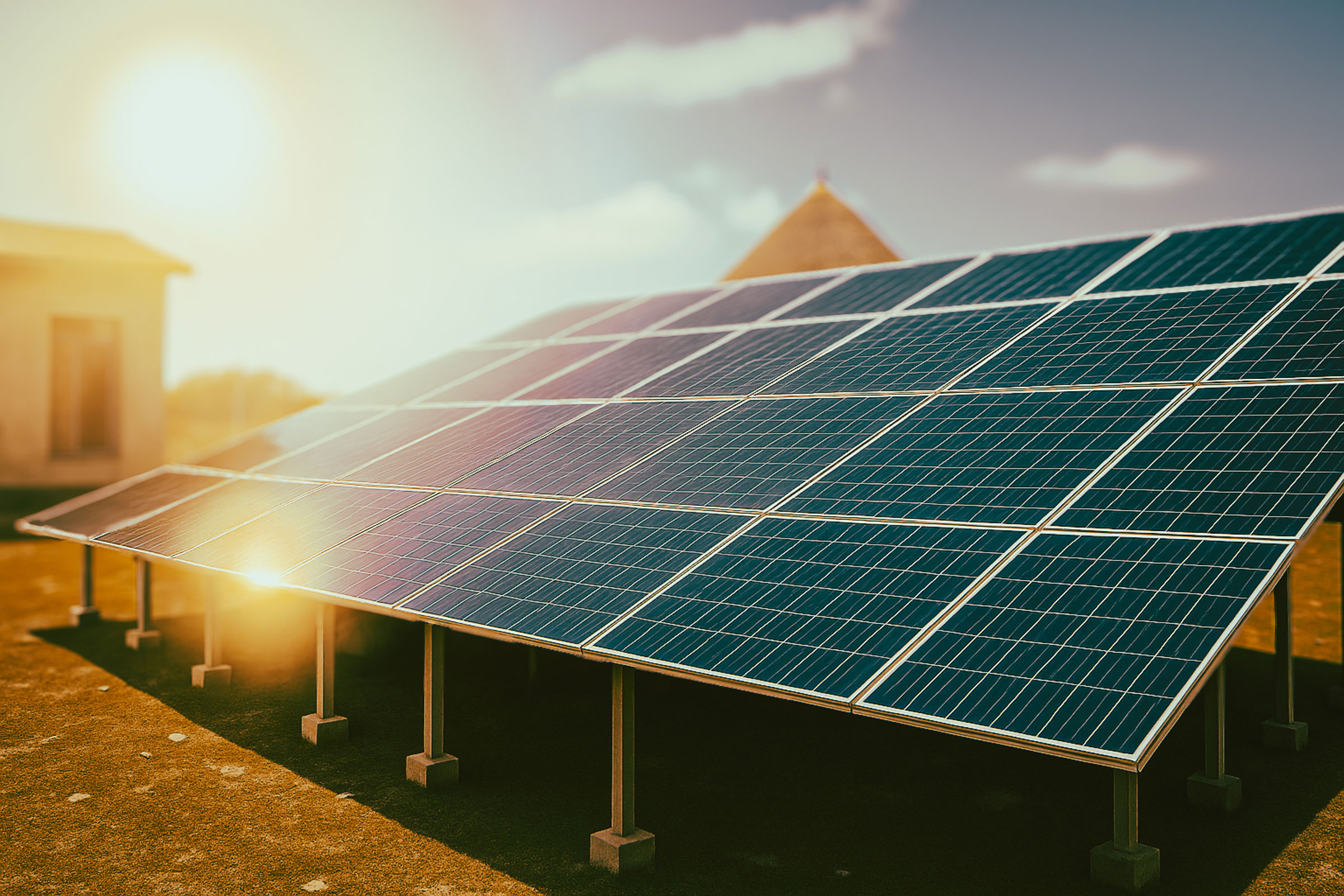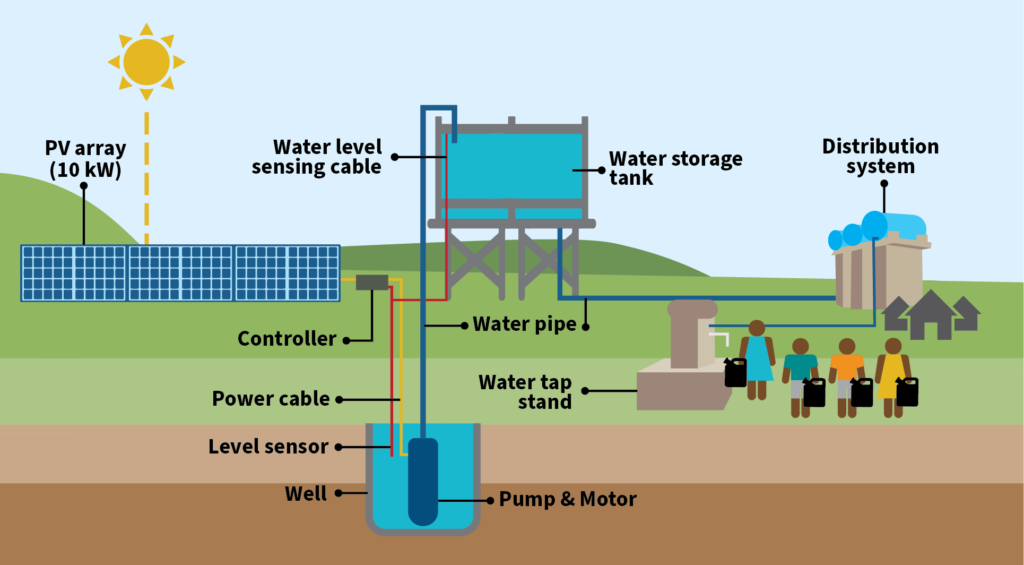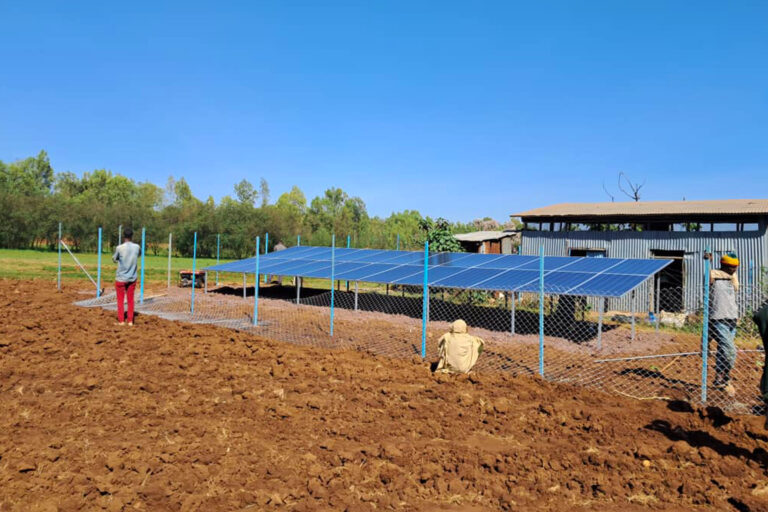
Clean water, clean energy: Private sector invests in solar pumps to improve access to community water supplies in Ethiopia
In the rural community of Wabe, nestled in Ethiopia’s West Arsi zone, a long-silent water system has roared back to life — through pumps powered not by diesel, but by the sun.
After years of disuse due to high fuel costs and frequent shortages, Wabe’s water system is running again. Thanks to a solar-powered pump installed through a lease-to-own contract with a local solar developer, water now flows daily to 26 public tap points, transforming life for the town’s 17,000 residents. Women and girls — once burdened with hours-long treks to fetch water — can now collect it close to home. It’s a powerful example of how clean energy can deliver not just sustainability, but dignity and opportunity.
This milestone marks the third successful pilot installation under Winrock International’s Demonstrating a Scalable Revenue Model for Community Solar Water Pumping in Ethiopia project, funded by the Conrad N. Hilton Foundation. The project is demonstrating an innovative business model to encourage private-sector investment in cleaner water infrastructure.
From diesel dependency to solar independence
Installed in 2020, Wabe’s original diesel-powered system included a borehole, reservoir and 37 public water points. But within eight months, operations halted; the fuel was too expensive and too hard to come by.
In March 2024, Wabe joined the Solarizing Community Water Supply project as a pilot community. After verifying the water system’s existing infrastructure, Winrock worked with local partners to size a new solar pumping system and invited local developers to bid. The community selected T Fam Solution, a private Ethiopian solar company, to install the system through a lease-to-own agreement.
With technical assistance from Winrock, Wabe’s water utility signed a three-year contract covering installation, operations and maintenance. The utility made a 10% down payment and began monthly installments to pay back the cost of the solar pump, funded by a water tariff of 100 Birr per cubic meter of water — enough to cover costs while maintaining reserve funds for system upkeep. (That’s about $0.9400 for 1,000 liters of water, or three gallons per U.S. cent based on recent exchange rates.)
The new system, commissioned in April 2025, includes a 13 kW submersible pump powered by a 20.4 kWp solar array — robust enough to meet the community’s daily water consumption of 100 cubic meters.
A scalable, sustainable solution

Winrock hopes the lease-to-own business model for water pump solarization can eventually be scaled up to benefit many thousands of communities like Wabe. By replacing diesel pumps with solar, the project is not only addressing access to clean water — it’s helping to cut carbon emissions and operational costs, while creating an investment opportunity for local solar developers.
The environmental benefits are substantial. Solar-powered water systems eliminate the need for diesel fuel, which emits around 2.68 kg of CO₂ per liter burned. For rural communities like Wabe and Wetet Abay — a pilot site in Amhara where solar installation more than doubled water distribution — the shift represents a win for the climate.
A model for the future
The Solarizing Community Water Supply project runs through November 2025. Winrock is planning a scale-up phase beginning in 2026 with the goal of expanding to 100 communities. Each pilot is a proof point: communities can take charge of their water systems, developers can see a return on their investment, and the climate benefits from cleaner technology.
Please click on the following links to learn more about the projects at Wetet Abay and Wabe; for a deeper dive into the work, check out this report by Winrock’s Jennifer Holthaus, Gedion Hailemichael, Bikash Pandey and Justin Giannantonio.
Related Projects

